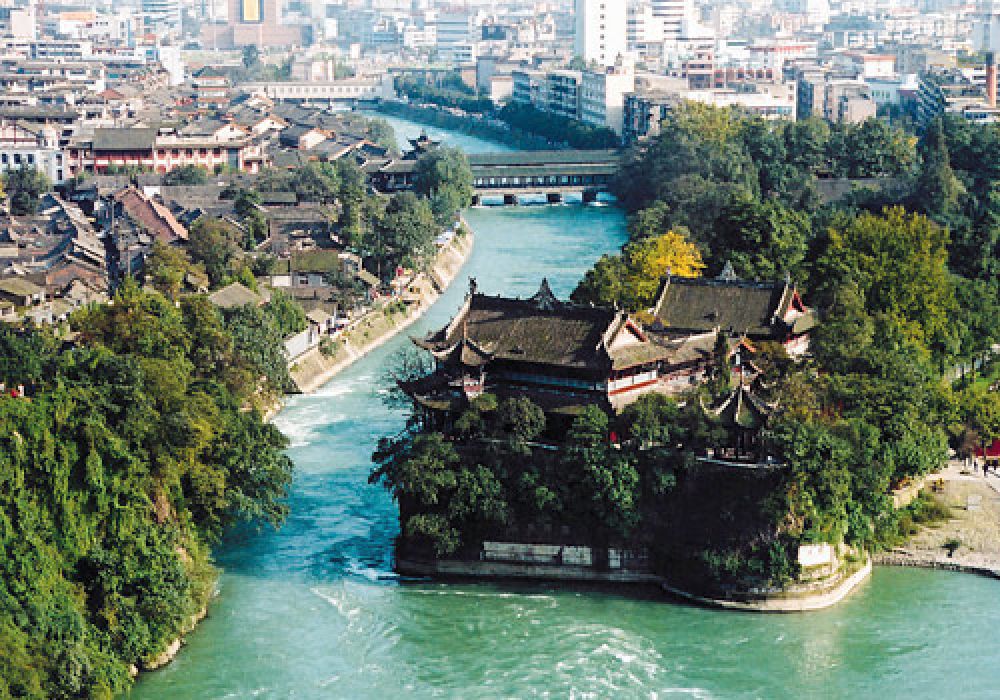

The Dujiangyan Irrigation System is one of the world's oldest and most sophisticated irrigation and flood control systems, still in use today. Located on the Min River in Sichuan province, near the city of Chengdu, it was constructed around 256 BC under the direction of the state of Qin. The system was designed by the governor of Shu Province, Li Bing, and his son, to control the flooding of the Min River and irrigate the fertile plains in the region.
From its inception, the Dujiangyan Irrigation System has played a crucial role in the development of the area, turning it into one of the breadbaskets of China. Its historical and technological significance attracted visitors even in ancient times. Recognizing its importance, UNESCO inscribed the Dujiangyan Irrigation System on the World Heritage List in 2000, as part of the "Mount Qingcheng and the Dujiangyan Irrigation System" World Heritage site. This recognition boosted tourism, and it became a must-see destination for those interested in ancient Chinese engineering, culture, and history.
In recent years, tourism management at Dujiangyan has adapted to cater to the rising interest in experiential and educational travel. Visitors are not only offered a view of an ancient wonder but also an understanding of ancient Chinese science and philosophy. The latest trends in Dujiangyan tourism include interactive tours, engaging exhibits, and themed festivals that celebrate the site's rich heritage.
When touring the system, visitors can walk along the banks of the Min River and inspect the Anlan Cable Bridge, which offers a panoramic view of the area. They might also explore the Erwang (Two Kings) Temple, dedicated to Li Bing and his son, or the Yuzui, Feishayan, and Baopingkou - which are the key parts of the hydraulic engineering project.
As part of ongoing efforts to enhance the tourism experience, there has been development of the surrounding infrastructure to accommodate the growing number of visitors. Accessibility has been improved with new transportation options, and many of the information plaques and displays are now offered in multiple languages, reflecting the site's international appeal.
Overall, the Dujiangyan Irrigation System remains a testament to the enduring ingenuity of ancient China, inviting ever more curious tourists from around the world to marvel at its millennia-old yet still functional architecture.
To ensure the preservation of the Dujiangyan Irrigation System for future generations, short-term and long-term conservation measures have been implemented. These include monitoring the environmental impact of tourism, regular maintenance of historic structures, and promoting sustainable tourism practices among visitors.
In conclusion, the Dujiangyan Irrigation System continues to stand as a symbol of China's rich legacy, attracting scholars, engineers, and tourists alike. With its combination of ancient history and modern tourism developments, it remains a prime example of how historic sites can be preserved and enjoyed in a rapidly changing world.